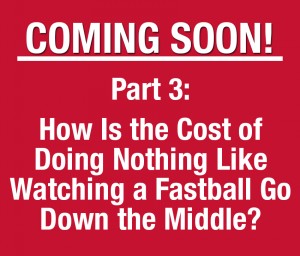 With spring comes America’s favorite pastime: baseball. For many people, there’s nothing better than sitting in your favorite ballpark, watching your favorite team on a sunny day with a hot dog in one hand and an ice cold drink in the other. In honor of this tradition, we’re exploring what hitting a curve ball and retrocommissioning have in common.
With spring comes America’s favorite pastime: baseball. For many people, there’s nothing better than sitting in your favorite ballpark, watching your favorite team on a sunny day with a hot dog in one hand and an ice cold drink in the other. In honor of this tradition, we’re exploring what hitting a curve ball and retrocommissioning have in common.
Hitting a curveball
Hitting a curve ball is easy in theory yet extremely difficult in a game. In order to drive the curve ball, the hitter must make a slight pause at the load before beginning his swing and weight transfer towards and through the ball. Why is this so difficult?
Let’s start with the obvious, which is pitch recognition. The two most common ways to recognize the curve ball are trajectory and spin. At a young age, most pitchers who throw curve balls have a little arc or hump in the pitch, and a hitter needs to be able to recognize this in order to drive the pitch into the gap.
Once a hitter has recognized the pitch, how does he hit the curve ball? The key here is to focus on driving the ball up the middle or to the opposite gap. If the hitter tries to pull this pitch, the two most common results are either a weak rollover or a lazy pop-up. If he keeps his hands back and tries to drive this pitch in the opposite gap, many times he will still pull the ball because
he is a little out front or fooled. However, by trying to drive the ball in the off gap and keeping his hands back, he will actually hit through the ball and make solid contact.
How is this like retrocommissioning?
Having a good approach and recognizing the pitch is similar to the site investigation phase of retrocommissioning. Just like knowing your swing and keeping to your approach, technicians have to know the use of the building and its systems and how they’re supposed to operate.
Commissioning existing building systems to create complete alignment with current facility operations will have an impact that can improve occupant comfort and reduce operating expenses. Building systems are evaluated and optimized to meet current needs and set up to serve these needs in the most efficient, sustainable manner. This is no different than a hitter staying balanced throughout the swing when hitting a curve ball and driving the ball up the middle or in the off gap.
With all that said, the best advice I can give you on hitting a curve ball is to not miss the fastball.
Have a question for our experts? Leave your comment below!







